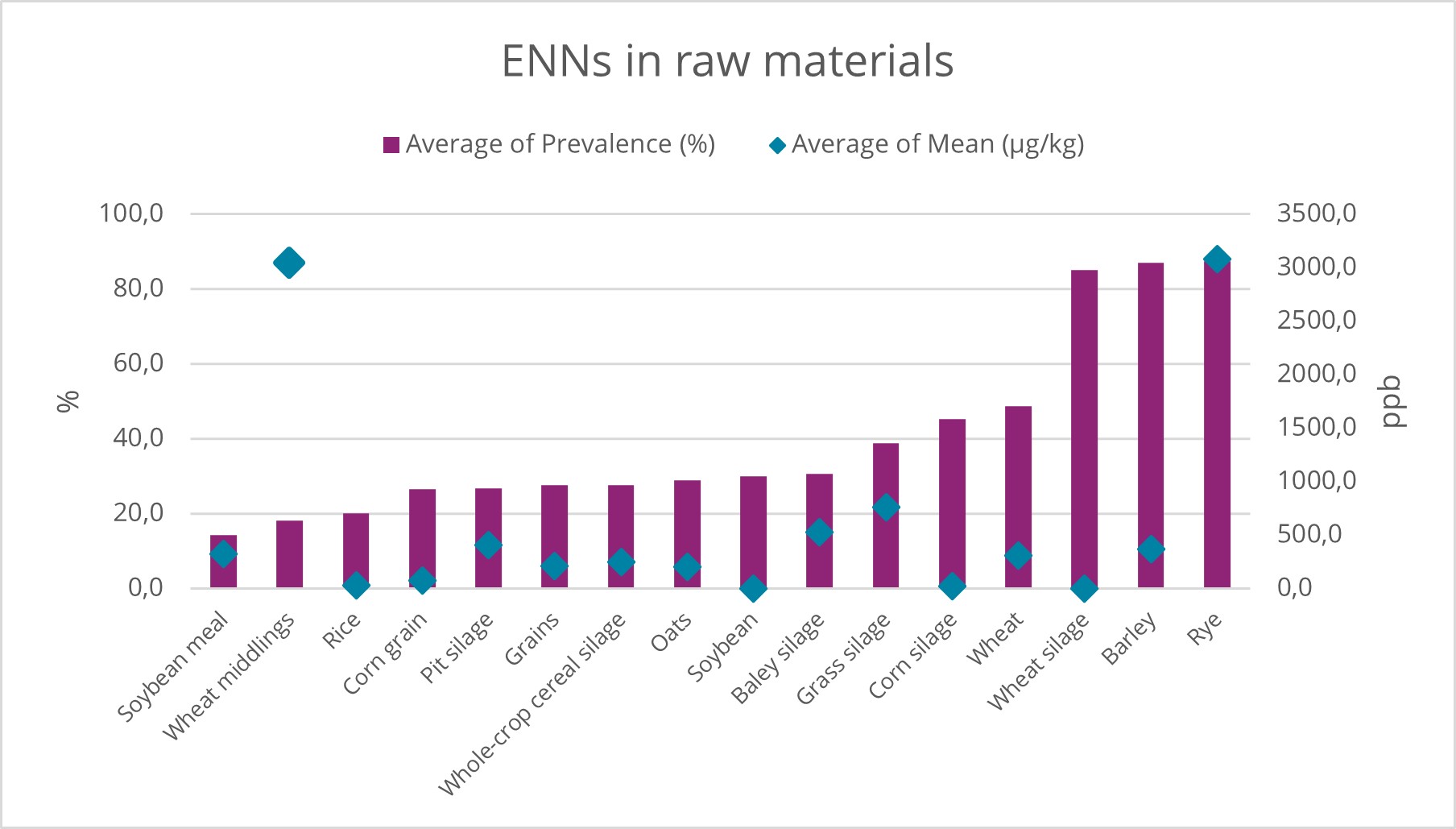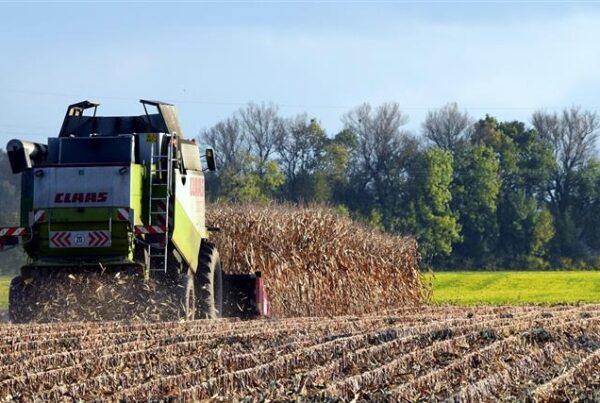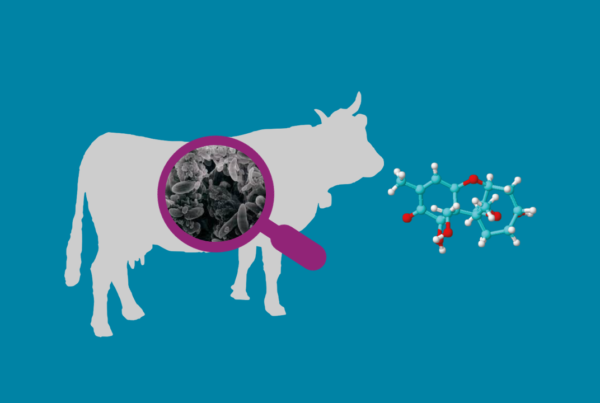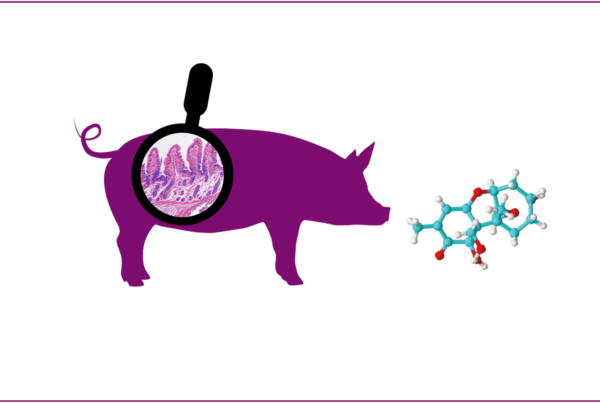Enniatins (ENNs), are considered as emerging mycotoxins. There are several ENNs (A, A1, B and B1), the most frequently detected are B and B1. They are produced by different species of Fusarium. ENNs are unregulated in Europe and USA and are not routinely determined in many monitoring programs.
ENNs are among the most prevalent natural contaminants in crops, and feed worldwide. They have been detected in a wide range of raw materials, mostly of the time being detected in small cereals (such as wheat, oats and barley). Geographically, samples from Europe, Africa and Asia often contain a high occurrence of ENNs, although their presence is global.

Researchers observed that fluctuating weather patterns affect ENNs occurrence. Most of the samples collected between 2013 and 2014 from different parts of the USA were found to contain higher levels of ENNs when compared to samples collected between 2015 and 2019.
ENNs frequently co-occur with other mycotoxins. They are commonly found together with other emerging mycotoxins such as beauvericin. In addition, co-occurrence of with regulated mycotoxins (like Deoxynivalenol) is also frequent. ENNs individual toxicity may be limited in some cases, but when coexisting with other toxins, they cause synergistic or additive detrimental effects. They affect performance (body weight, conversion), organs, and induce intestinal inflammation and oxidative stress in livestock.
In conclusion, ENNs are emerging mycotoxins that normally affect small cereals and they have limited toxicity alone, but they work synergistically with other mycotoxins to affect animal health and performance.
Reference: Kolawole, O; Siri-Anusornsak W; Petchkongkaew A and Elliott C. 2024. A systemic review of global occurrence of emerging mycotoxins in crops and animal feeds, and their toxicity in livestock. https://doi.org/10.1016/j.emcon.2024.100305



